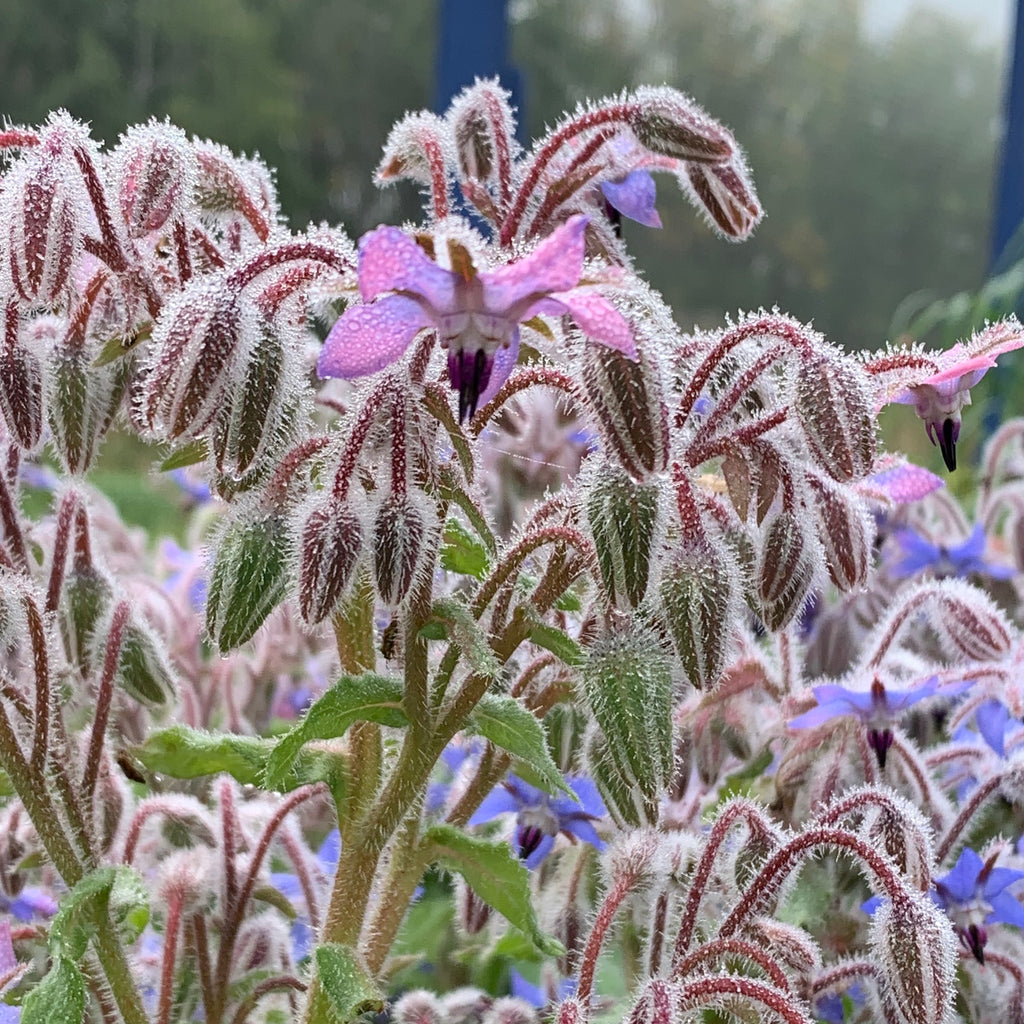Talk about being statistically spot on!! The average first frost date for the Winnipeg area is September 22, and this year's first frost arrived right on cue in the early morning hours of September 22 (at least at our place, city yards may have been spared). While this feels a little disappointing after the remarkably delayed frost of 2021 (October 12th), it is also a fitting way to welcome the first official day of fall.
So, now that many of us have had or are close to the first frost, what happens next in the garden?
Harvest
There comes a point in time when vine-ripening warm season veggies is either very slow or no longer possible and it makes more sense to just go ahead and harvest. This is particularly true of tomatoes, which will easily ripen to maturity on a windowsill, with ideal temperatures being around 20C. Peppers don't ripen after harvest, but both sweet and hot types can be enjoyed at a range of ripeness - so go ahead and pick! Cucumbers and zucchini do not ripen after picking, so just like peppers, enjoy these where ever they are at the moment. Potatoes and sweet potatoes store better if harvested before exposure to significant frost, so these should also be pulled.

Cantaloupes do ripen after harvest, so be sure to find all of the melons that may be hiding under those vines!

Onions, carrots and leeks can stay in the ground a while longer, and in fact, carrots will get sweeter after exposure to cool temperatures.
Garden herbs also need to be picked if you want to preserve them and don't forget this rule of thumb: botanical perennials like oregano and thyme are at peak flavour when in flower, and those flowers have intense flavour when dried (the opposite is generally true of annual herbs, like basil, which becomes bitter when in bloom). Most herbs can be air dried, slowly dried at the lowest setting in the oven, or dried in a dehydrator.

Save seeds
Seeds, in general, are a huge opportunity for gardeners, with many types easily harvested for replanting. For consistent results, most home gardeners limit seed-saving to open-pollinated (non-hybrid) varieties. Exposed seeds are ripe when they start to "shatter", i.e. fall from the seedheads, or once they have matured to a tan, brown or black colour. Some seeds will be tucked into mature flowers or may be held inside a structure like a poppy head; try assessing for ripeness by seeing whether or not the seeds fall out of whatever structure is holding them in place.
An easy technique for harvesting seeds is to place a paper bag over the seed head, snip the stem and let the seedhead fall into the bag. You can go ahead and let them dry further in the bag or just separate seeds from chaff immediately (most seeds germinate better if they are cleaned before replanting).
You can also save seeds from fruiting plants like tomatoes, peppers and cucumbers but these should be left to ferment in water for about a day before being cleaned and then allowed to dry for storage.
BTW, fall seeding of many veggies, herbs and perennials is ideal... but we'll talk more fully about that another day.

Bring cold sensitive plants indoors
It can be hard to get motivated to move plants indoors as this firmly acknowledges that summer is over. However, the longer plants are exposed to cool temperatures the more stressful the transition to indoors becomes - particularly after exposure to frost. When moving plants indoors, snip back stem tips to encourage new growth that has only known indoors and also to stimulate growth at a time when plants otherwise may become semi-dormant. Removing stem tips also greatly reduces the likelihood of bringing soft-bodied pests in from the outside, as these hideout on the undersides of upper leaves. Pot-bound plants also benefit significantly from being up-sized during the move indoors.

Take cuttings
Bringing full-sized plants indoors is space intensive and not always practical, so an alternative option is to take stem cuttings from your pots or garden. This technique is a perfect way to preserve special or hard-to-come-by varieties for the next season and works easily for soft-stemmed and semi-woody cuttings. We love taking rosemary, lavender, sage, oregano, thyme and mint cuttings in fall, as well as cuttings for tender bedding plants like geraniums, salvia and more. Cuttings often simply root in water (changed frequently) and can be potted up once they are obviously rooted. Rooted cuttings are much easier to manage indoors compared to full-sized plants.

When preparing cuttings, choose stem sections that are healthy and about 4" long. Strip the lower leaves off and trim the base at an angle to encourage a callous to develop, which is the first step towards rooting. Plant varieties with large foliage should be trimmed back by 50%-75% on the leaves, to discourage wilting.







